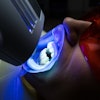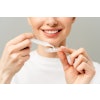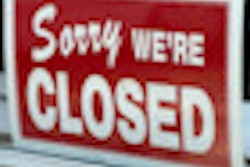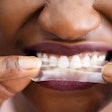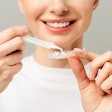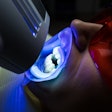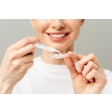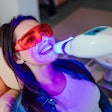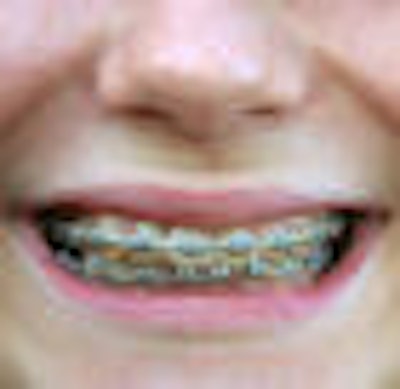
In 2008, DrBicuspid.com reported on a curious case of an elderly patient who swallowed a screwdriver and aspirated a wrench during two different dental appointments with the same practitioner.
Now a new study has found that such cases may not be that curious after all (Journal of the American Dental Association, January 2011, Vol. 142:1, pp. 45-52).
The authors looked specifically at the inhalation and ingestion of orthodontic objects and found only a limited number of cases reported, prompting them to speculate that dental practitioners and orthodontic specialists might not be willing to volunteer information about detached orthodontic appliances out of concern for their reputation.
“Patient education is the only way to minimize incidents out of the office.”
— Karen Tiwana, DDS
Dror Aizenbud, DMD, MSc, a senior lecturer and chair of the orthodontic and craniofacial department at the Graduate School of Dentistry at Rambam Health Care Campus, and colleagues wanted to investigate why more articles are not published on this topic after they realized from personal communication with orthodontists that such cases occur with greater frequency than originally thought.
"For orthodontics patients, the risk is always there," he told DrBicuspid.com. "There are very small particles such as coil springs, small pieces of wire, and orthodontic brackets that can be easily swallowed during treatment, and their sharp edges and irregular forms can be of danger to the patient and cause complications in the respiratory and digestive system."
More out-of-office events
The study authors conducted literature searches using PubMed and Embase databases and selected appropriate studies. They analyzed retrieved articles according to several parameters: inhalation or ingestion event, number of cases, patient's sex and age, type of orthodontic appliance, in-office or out-of-office event, and medical treatment.
They examined data from 18 reports that met their inclusion criteria. Among their findings:
- Most cases (67%) involved ingested objects; of those cases, the majority (57%) occurred in female patients.
- Most cases (85%) occurred outside the orthodontist's office.
- 17 patients (71%) had been treated with a fixed orthodontic appliance.
- With one exception, no severe complications were reported (only seven patients were examined in a hospital emergency department), and patients were discharged uneventfully from the orthodontic office or emergency department.
"Orthodontists and team members should participate in medical emergency management courses that emphasize the use of guidelines in cases of inhalation or ingestion of orthodontic objects," the authors concluded. "Each orthodontist's office should develop written emergency protocols for out-of-office events and present them to patients and their parents at the start of treatment."
The fact that most reported cases have been out-of-office incidents was not surprising, Dr. Aizenbud said, because "contrary to other dental treatments, orthodontic patients wear the appliance out."
|
How to avoid inhalation/ingestion of dental objects Dr. Aizenbud offered the following suggestions for avoiding and managing cases of inhalation or ingestion:
|
He believes dentists don't like to mention such mishaps because they are embarrassing, which poses a problem in trying to do longitudinal studies, even when they are anonymous.
"We are thinking about arranging a survey among dentists and orthodontists to get more accurate information on this topic," Dr. Aizenbud said. "We really want to know how frequently things like this happen."
Hussam Abdel-Kader, BDS, a professor of orthodontics at Al-Azhar University and Misr International University (MIU), published a case report about a broken transpalatal arch wire that was swallowed by a patient (Journal of Orthodontics, March 2003, Vol. 30:1, p. 11). He urges caution during orthodontic treatment.
"It is very unique to find a major part of the orthodontic appliance, such as the transpalatal arch wire, broken and swallowed by the patient," he told DrBicuspid.com. "Something like this could endanger the patient's life, and it is a very vital and critical issue that must be taken seriously."
Publishing case reports or studies in this area will highlight the need for not only the orthodontist but also the dental practitioner to be very careful during any dental procedure to avoid such accidental events, he added.
According to Dr. Kader some common cases of inhalation and ingestions occur because soldered parts of the orthodontic appliance are not strong enough to withstand the force of occlusion and the orthodontist does not carefully check all parts of the appliance during the scheduled visits of their patients.
Karen Tiwana, DDS, who has conducted similar research (Journal of the American Dental Association, September 2004, Vol. 135:9, pp. 1287-1291), told DrBicuspid.com while there is a clear protocol for what to do when a patient inhales or swallows an object in the office, including chest and gastrointestinal films to locate the object, practitioners should develop a protocol for what to do when it occurs outside of the dental office, Dr. Tiwana said.
"Patient education is key for an out-of-office event," she said. "You can use some preventive precautions in the office -- rubber dam, throat packs, etc. -- but patient education is the only way to minimize incidents out of the office."
Copyright © 2011 DrBicuspid.com


